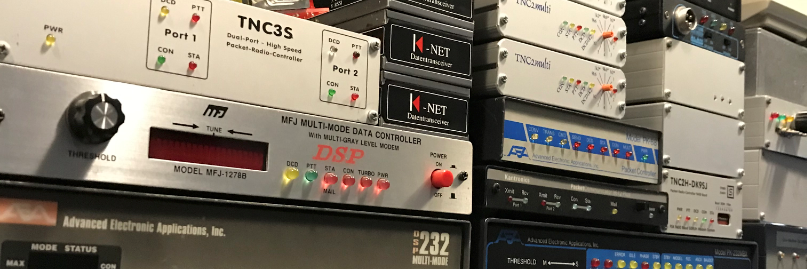
NinoTNC Firmware 4.06 is what is shipping from ETSY. (we started shipping the “FAT” processor in January 2021) 3.06 is the same firmware (different RAM/buffer sizes) programmed into the 256 “thin” processor. We like .06 for stability and being ‘full’ featured. Nino is working on future firmware and he’s been improving things and breaking things. Up until now, no new features are added the the code, only clean-ups and improvements to functionality. For instance, 1200 baud AX.25 receive is better again than it was before, we think. Also, there is a new firmware boot loader in the new firmware. Nino also write a new Python boot loader and that is in the GitHub, zflash and tarpn scripting. https://github.com/ninocarrillo/flashtnc I am including the latest test versions, as well as the reliable .06, in the “tarpn update” and in the zflash commands for people using Raspberry PI. In 3.07 / 4.07, Nino pulled apart the memory management, the way the different modes were separated in the program and the way certain timed features were called out. .07 specifically tested the new memory and MODE-function calling and was definitely not working on all of the functions we had in 0.6. Now, several versions later, and many hours of testing and work on Nino’s part and some of the NCPACKET network people’s part, .14 is much better than .07. However…. 3.14 and 4.14 are test versions. .14 may not be ready for prime time! There still may be untested features missing or broken in .14 that were working in .06. So far we have had no trouble using the boot loader to move back and forth from 3.06 and 4.06 to the new stuff. All of the NinoTNC firmware (since 2.81 in October 2020) works in A2, A3 and A4 NinoTNCs. Beware that versions 2.90 through 3.05 should not be put on your NinoTNC because the boot loader support in those versions can get you stuck, requiring a PIC-KIT to refresh the chip. See the change log for details: http://tarpn.net/t/nino-tnc/n9600a/n9600a_history.html#changelog
This is how the update process looks like.
pi@pi1lap:~/tarpnflash $ python3 flashtnc.py /home/pi/flashtnc/N9600A-v4-0-6.hex /dev/ttyACM0 Opened port /dev/ttyACM0 Scanning hex file to determine target chip. Hex file target: dsPIC33EP512GP Opened file /home/pi/flashtnc/N9600A-v4-0-6.hex Flushing serial buffer. Starting TNC reflash mode. Don't interrupt this process, the dsPIC may brick. Flushing serial buffer again. TNC successfully entered bootloader mode. TNC bootlader version: B TNC ready for hex file, starting transfer. This will take a few minutes. Start time: 09:17:38 Lines written: 1000 Lines written: 2000 (snip) Lines written: 10000 Lines written: 11000 Lines written: 12000 End time: 09:19:49 Line count: 12791 Firmware update successful.
A test Packet
08:28:02R N9600A-3>IDENT Port=1 : :Test Packet=FirmwareVr:4.06=SerialNmbr:=UptimeMilS:00077666=BrdSwchMod:04060002=AX25RxPkts:00000003=IL2PRxPkts:00000000=IL2PRxUnCr:00000000=TxPktCount:00000114=PreamblCnt:0000001E=LoopCycles:00532CD0
08:27:49R N9600A-3>IDENT Port=1 : :Test Packet

















